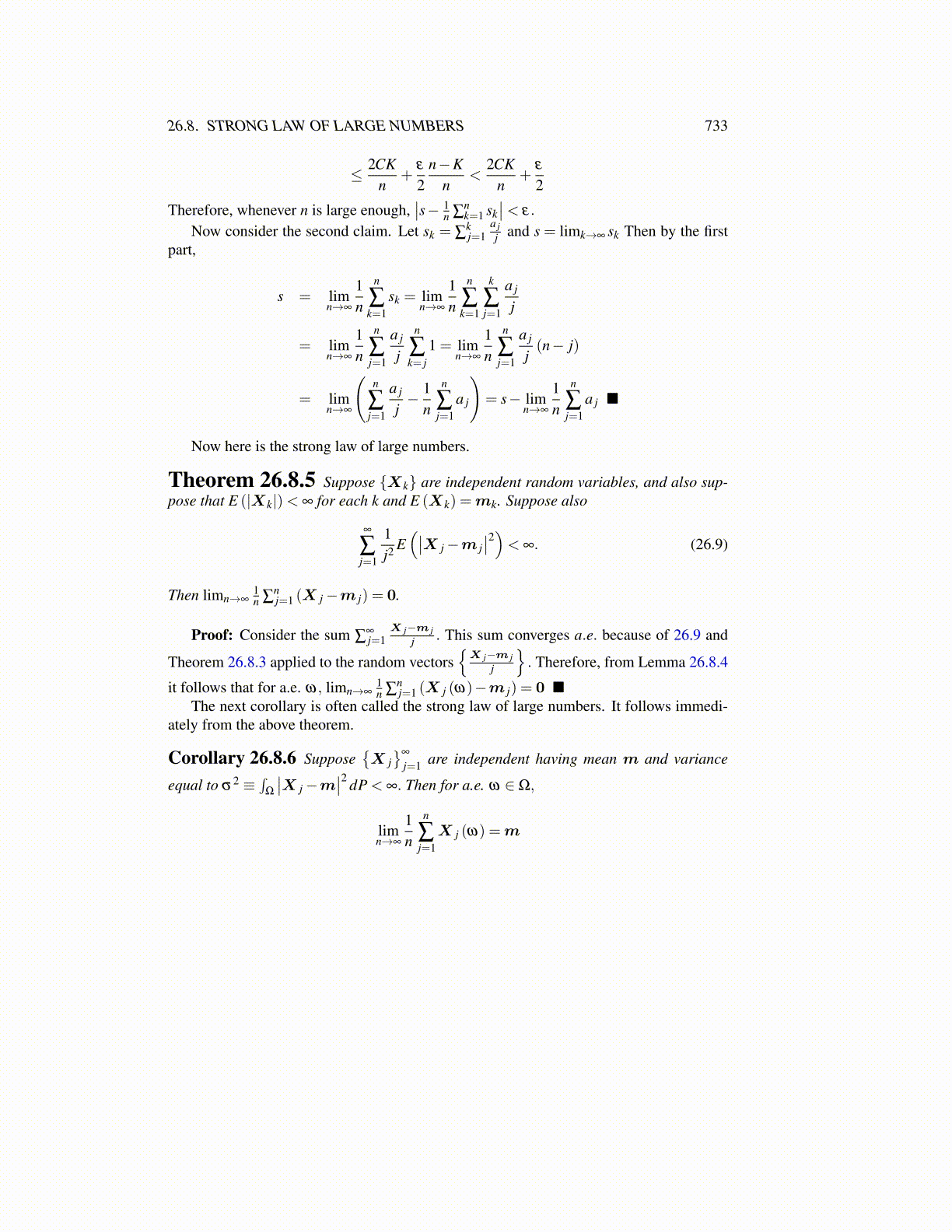
26.8. STRONG LAW OF LARGE NUMBERS 733
≤ 2CKn
+ε
2n−K
n<
2CKn
+ε
2
Therefore, whenever n is large enough,∣∣s− 1
n ∑nk=1 sk
∣∣< ε.
Now consider the second claim. Let sk = ∑kj=1
a jj and s = limk→∞ sk Then by the first
part,
s = limn→∞
1n
n
∑k=1
sk = limn→∞
1n
n
∑k=1
k
∑j=1
a j
j
= limn→∞
1n
n
∑j=1
a j
j
n
∑k= j
1 = limn→∞
1n
n
∑j=1
a j
j(n− j)
= limn→∞
(n
∑j=1
a j
j− 1
n
n
∑j=1
a j
)= s− lim
n→∞
1n
n
∑j=1
a j ■
Now here is the strong law of large numbers.
Theorem 26.8.5 Suppose {Xk} are independent random variables, and also sup-pose that E (|Xk|)< ∞ for each k and E (Xk) =mk. Suppose also
∞
∑j=1
1j2 E
(∣∣X j−m j∣∣2)< ∞. (26.9)
Then limn→∞1n ∑
nj=1 (X j−m j) = 0.
Proof: Consider the sum ∑∞j=1
X j−m jj . This sum converges a.e. because of 26.9 and
Theorem 26.8.3 applied to the random vectors{
X j−m jj
}. Therefore, from Lemma 26.8.4
it follows that for a.e. ω, limn→∞1n ∑
nj=1 (X j (ω)−m j) = 0 ■
The next corollary is often called the strong law of large numbers. It follows immedi-ately from the above theorem.
Corollary 26.8.6 Suppose{X j}∞
j=1 are independent having mean m and variance
equal to σ2 ≡∫
Ω
∣∣X j−m∣∣2 dP < ∞. Then for a.e. ω ∈Ω,
limn→∞
1n
n
∑j=1X j (ω) =m